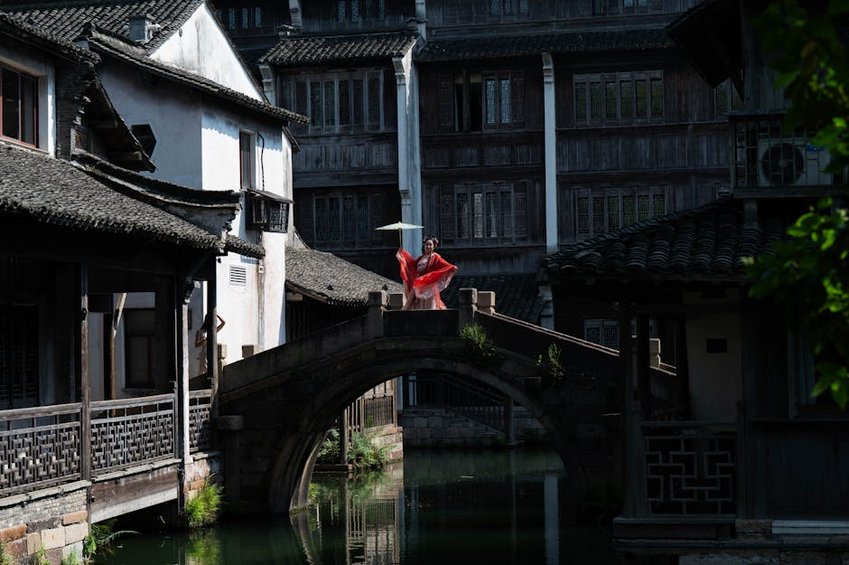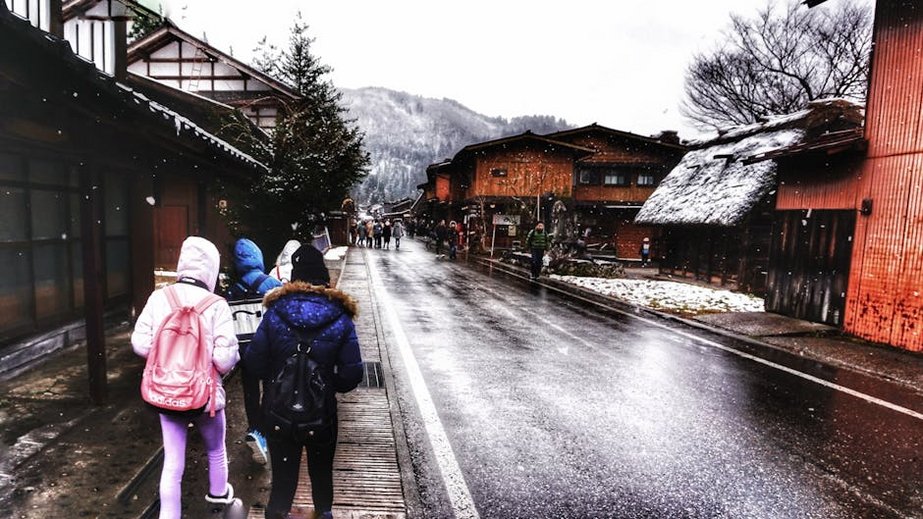Japan Takayama Old Town: Historic Charm and Culture
Japan Takayama Old Town transports visitors to the Edo period with preserved merchant houses and narrow streets in the Hida region. This historic district showcases traditional architecture, morning markets, and sake breweries that highlight Japan’s cultural heritage. Your exploration reveals authentic crafts, seasonal festivals, and culinary delights unique to this mountain town.
Essential Information About Takayama
Takayama Old Town dates to the 17th century when it flourished as a wealthy merchant center under the Tokugawa shogunate. The area avoided wartime destruction, preserving over 200 traditional buildings with latticed windows and wooden facades. This historical significance earned it designation as an Important Preservation District for Groups of Traditional Buildings in Japan.
Located in Gifu Prefecture within the Japanese Alps, Takayama sits 420 meters above sea level with a climate ranging from snowy winters to humid summers. The town spans approximately 2,177 square kilometers, though the historic core focuses on the Sanmachi Suji district. Visitors access it via JR Takayama Line from Nagoya or direct buses from Tokyo.
Key Historical Facts
Understanding these details enhances your appreciation of the architecture and local traditions.
- Takayama developed independence under the Kanamori clan from 1585 to 1692, establishing unique cultural practices.
- Traditional kura storehouses stored silk, salt, and sake, with some converted into museums and shops today.
- The town hosts the Takayama Festival each spring and autumn, featuring ornate floats dating to the 1600s.
- Budget travel costs $50-80 daily using hostels ($25-40/night), convenience store meals ($5-10), and walking between attractions.
- Mid-range options total $100-150 with business hotels ($60-90/night), restaurant meals ($15-25), and local train tickets.
- Luxury experiences reach $200-300 featuring ryokan stays ($120-200/night), kaiseki dinners ($50-80), and private guides.
- Hida Takayama Official Tourism Guide
- Japan Guide Takayama Information
Geographical Context
Takayama’s mountain location influenced its isolation and preservation of traditions over centuries. The Hida region’s abundant forests provided timber for construction, visible in the blackened wood of old houses. This setting creates dramatic seasonal changes, from cherry blossoms in April to snowscapes in January.
Transportation options include the Hida Limited Express train from Nagoya taking 2.5 hours, or highway buses from Shinjuku Station in Tokyo requiring 4.5 hours. The compact historic district allows walking between attractions, though rental bicycles expand your range to nearby temples and parks.
Cultural Significance
Takayama maintains artisan traditions like woodworking, lacquerware, and sake brewing passed through generations. The Hida Takayama Museum of Art displays regional crafts, while morning markets continue centuries-old trading customs. These elements combine for an immersive cultural experience distinct from larger Japanese cities.

Alt: “takayama-old-town-traditional-merchant-houses-snow”
Planning Your Japan Takayama Old Town Visit
Japan Takayama Old Town requires strategic timing to avoid crowds while enjoying optimal weather conditions. Spring and autumn deliver pleasant temperatures between 50-68°F (10-20°C) with cherry blossoms or fall foliage enhancing the scenery. Winter visits from December to February offer snowy landscapes but require thermal layers for 23-41°F (-5 to 5°C) conditions.
Budget approximately $80-150 daily for mid-range travel covering accommodation, meals, and local transportation. Splurge on Hida beef meals costing $25-50, while budget travelers find ramen bowls for $8-12. Advance bookings secure traditional ryokan stays during popular festivals in April and October.
Your itinerary should allocate 2-3 full days to explore the historic district, nearby Hida Folk Village, and day trips to Shirakawa-go. Purchase the Takayama-Hokuriku Area Tourist Pass for discounted regional travel if combining with Kanazawa or Toyama visits.
Best Time to Visit Takayama Old Town
April through May provides ideal conditions with mild temperatures of 55-70°F (13-21°C) and cherry blossoms peaking mid-April. The Takayama Spring Festival occurs April 14-15 with daytime parades and evening lantern displays. September to November brings comfortable 50-65°F (10-18°C) weather and vibrant autumn colors, especially during the Autumn Festival October 9-10.
Summer months from June to August see higher humidity and temperatures reaching 86°F (30°C), though mountain breezes provide relief. Winter from December to February transforms the town with snow coverage, creating picturesque scenes but reduced hours for some attractions. Shoulder seasons in March and late November offer fewer tourists and lower accommodation rates.
Budget Planning and Costs
Daily expenses vary based on accommodation style and dining preferences.
Essential Preparation Checklist
Pack layered clothing suitable for changing mountain weather, including waterproof jackets and comfortable walking shoes. Winter visits require thermal underwear, insulated boots, and traction devices for icy streets. Bring cash since some smaller shops and markets don’t accept credit cards, though ATMs are available at convenience stores.
Secure your Japan Rail Pass before arrival if traveling extensively, though regional passes like Takayama-Hokuriku offer better value. Download offline maps and translation apps since English signage is limited outside major tourist areas. Reserve accommodation 3-4 months ahead for festival periods, or 1-2 months for regular visits.
Top Attractions and Activities
Takayama’s historic district centers on Sanmachi Suji, three streets lined with Edo-period merchant houses now housing museums, shops, and sake breweries. The Takayama Jinya served as the former government headquarters during the Edo period, featuring tatami rooms and historical exhibits. Morning markets along Miyagawa River and Jinya-mae Street operate daily from 7:00 AM to noon, offering local crafts and food samples.
Hida Folk Village located 2 kilometers from the center showcases over 30 traditional gassho-zukuri farmhouses relocated from surrounding areas. This open-air museum demonstrates rural architecture with steep thatched roofs designed for heavy snowfall. Visitors can watch artisans practicing woodworking, weaving, and other traditional crafts throughout the year.
Must-See Highlights
Takayama Festival Floats Exhibition Hall displays yatai floats used in the spring and autumn festivals, featuring intricate woodcarvings and mechanical dolls. Admission costs 900 yen ($6) with audio guides available in English explaining the history and craftsmanship. Visit early morning or late afternoon to avoid crowds from tour groups arriving between 10 AM and 2 PM.
Kusakabe Heritage House represents merchant architecture from 1879 with a blackened exterior and elegant interior featuring a central irori hearth. Entry fee is 500 yen ($3.50) with detailed explanations of the family’s sake brewing business. The nearby Yoshijima Heritage House offers similar insights with fewer visitors and beautiful light filtering through paper screens.
Sake breweries in the historic district provide tasting opportunities and insight into traditional brewing methods. Hirase Sake Brewery and Harada Sake Brewery offer tours explaining the process, with tastings costing 300-500 yen ($2-3.50) for multiple samples. Purchase local varieties like junmai ginjo as souvenirs unavailable outside the region.
Hidden Gems and Local Favorites
Shishi Kaikan Lion Mask Exhibition Hall showcases elaborate lion masks used in traditional performances, with demonstrations scheduled throughout the day. This lesser-known attraction costs 500 yen ($3.50) and provides intimate viewing of the intricate carvings and textiles. The adjacent garden offers quiet contemplation spaces away from main tourist paths.
Higashiyama Walking Course connects 13 temples and 5 shrines along a 3.5-kilometer path through wooded hills east of the center. This route takes 2-3 hours at a leisurely pace, passing through quiet neighborhoods with occasional city views. Early morning visits provide solitude and excellent photography opportunities in soft light.
Seasonal Events and Festivals
Takayama Festivals in spring (April 14-15) and autumn (October 9-10) feature elaborate floats, traditional music, and nighttime processions. These events draw significant crowds, requiring hotel reservations 6-12 months in advance and premium viewing spots costing $20-40. Off-season visits still offer cultural experiences at smaller shrines and regular craft demonstrations.
Winter illumination events from December to February light up the historic district after sunset, creating magical scenes against snow backgrounds. Special winter sake tastings occur at local breweries, paired with hot pot dishes featuring Hida beef. These seasonal activities provide unique perspectives beyond standard tourist itineraries.
Practical Travel Information
Accommodation in Takayama ranges from traditional ryokan with onsens to modern business hotels and budget hostels. The historic district offers the most atmospheric stays but higher prices, while areas near the station provide better value and easier transportation access. Book directly with properties for potential discounts or added amenities like dinner packages.
Local transportation relies on buses for reaching attractions outside walking distance, with day passes costing 600 yen ($4) for unlimited rides. Taxis are available but expensive, starting at 500 yen ($3.50) for the first kilometer. Rental bicycles cost 1,000-1,500 yen ($7-10) daily and provide flexibility for exploring the wider area.
| Accommodation Type | Features and Location | Price Range (USD) |
|---|---|---|
| Traditional Ryokan | Onsen baths, kaiseki meals, historic buildings in old town | $120-300/night |
| Business Hotel | Western rooms, free wifi, near station with breakfast included | $60-100/night |
| Guesthouse/Hostel | Shared facilities, kitchen access, social atmosphere in central areas | $25-50/night |
| Vacation Rental | Full apartments, self-catering, residential neighborhoods | $80-150/night |


